George Stewart (“G.S.”) McLennan
(1883-1929)
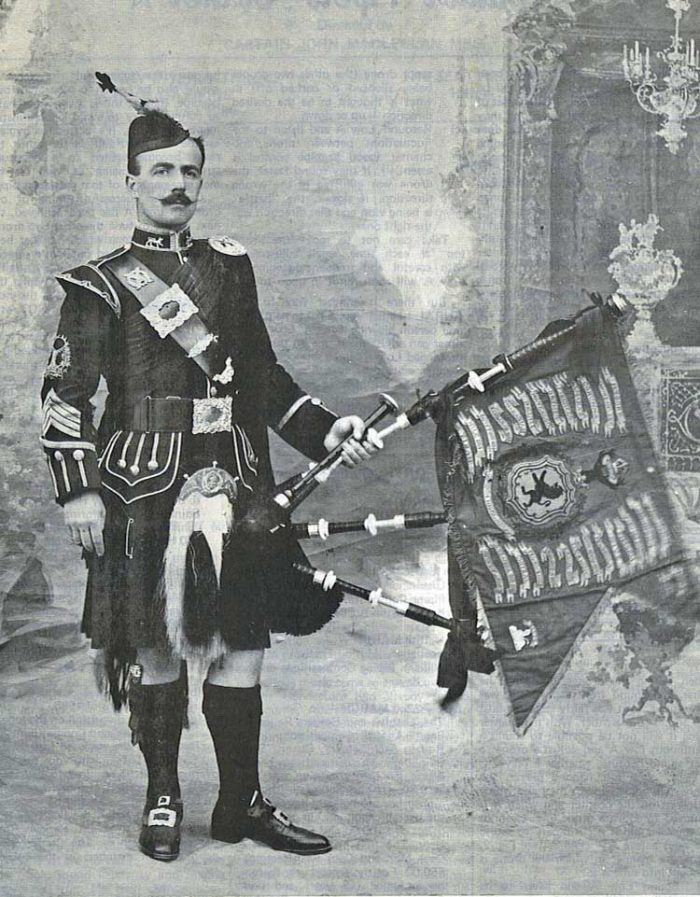
Gather together all those pipers said to be “the best piper of his day,” and G. S. McLennan would probably be the best.
Those who heard him say his fingers were miraculous. His astonishing technical prowess contributed to an important evolution in Highland pipe technique in the early part of the twentieth century. As a composer of bagpipe music, the quality and lasting appeal of his tunes are unequalled. As a person he was modest, generous and well-liked by his peers. But on the strength of his light music playing alone his name would almost certainly be included in lists of the top three pipers ever.
He was born in Edinburgh in 1883 to a leading and long-standing piping family and would die in his prime at age 46 in 1929 with his only book of music just off the presses. While most in the family spelled the name “MacLennan,” it appeared that G. S.’s immediate family, starting with his father, spelled it “McLennan.” The birth and death certificates both use the spelling ‘McLennan.’ In fact, the name on G. S.’s birth certificate is “George Charles Stewart McLennan,” the result of his parents naming an earlier child who was born and died in 1881 “George Stuart McLennan.” This renaming practice was common among Victorians, who frequently suffered child loss. The name “Charles” does not appear on G. S. McLennan’s death certificate
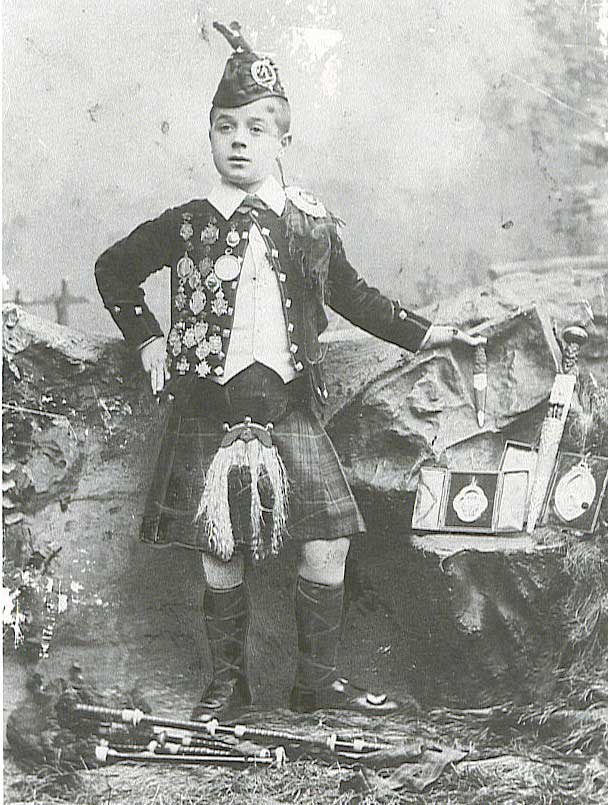
His father, Lieutenant John McLennan, was a recognized and outspoken authority on bagpipe music with views on piobaireachd which some contemporaries considered radical. A stern critic of the early Piobaireachd Society, his later reputation suffered accordingly. He would produce two books of music later in his life: Piobaireachd as MacCrimmon Played It (1907) and The Piobaireachd As Performed in theHighlands for Ages till about the Year 1808, which would be published in 1924, after his death.
The Lieutenant remarried when G. S. was 8, and the young boy acquired some step-siblings, of which the youngest and most well known to piping would be Donald Ross McLennan, or “D. R.” as he would become known. D.R. won both Gold Medals in 1956, became one of the most notable reedmakers of his time, and died in 1984, outliving his revered half-brother by more than two generations.
G. S. was not a healthy young boy and suffered with polio as a child. He learned pipes at age 4, first from his father and later from his uncle, Pipe Major John Stewart, whom he later commemorated with a march. But he continued to be taught throughout his development by his father and his cousin William, himself a pupil of G. S.’s father and considered one of the finest light music players of the time. He would also learn Highland dancing from William, whose accomplishments as a competitive dancer were legendary. By the age of 10, G. S. was winning prizes in amateur competitions and had caught the attention of Queen Victoria, who had him play for her at Balmoral.
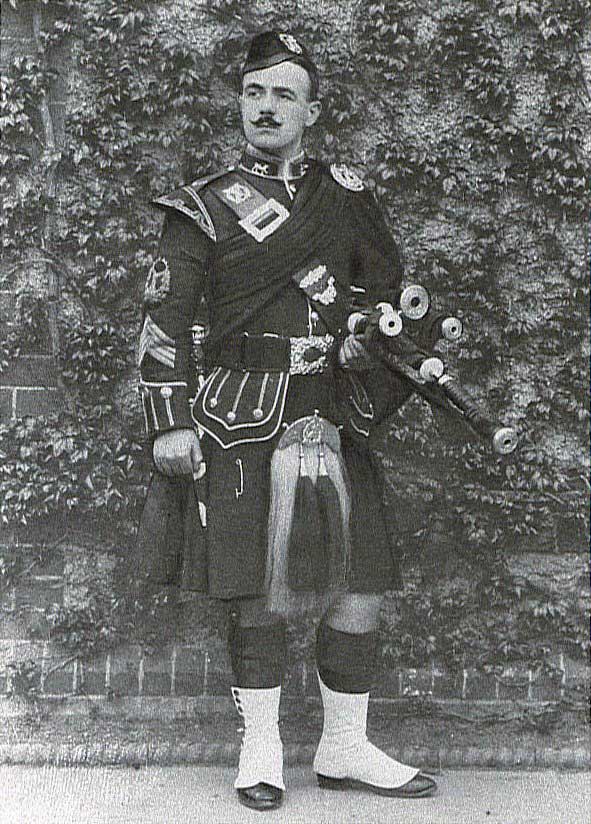
G. S. loved the sea. His father feared he would jeopardize his promising piping career by joining the merchant navy, so on October 3, 1899, Lieutenant John sent the 16-year-old boy to a Gordons recruiting station with a confidential note that read, “Please enlist my boy the bearer George Stewart McLennan in the 1st Gordon Highlanders and send him up to the Castle as soon as possible.” The surprised young man duly found himself in the Gordons.
His father’s judgement was sound: G. S. rose quickly through the ranks, becoming Pipe Major of the 1st Battalion in 1905 at age 21 – one of the youngest pipe majors ever in the British Army.
He won the Gold Medal at Oban in 1904, the Gold Medal at Inverness in 1905, and the Clasp at Inverness for former winners of the Gold Medal in 1909, 1920 and 1921. He would have two sons, George (1914) and John (1916). Both became pipers with the Gordons, John dying at St. Valery in 1940 and George living to age 81.
G.S. served in the trenches late in the First World War. On May 14, 1918 he became ill. Two days later he played ‘A’ Company over the top and the next day collapsed with illness that would never leave him. But he returned to duty and began making reeds in the trenches for fellow pipers. He was discharged from the Gordons in 1922.
G.S. made Aberdeen his home. After his discharge he set up a pipe-making business there, a trade he plied until his untimely passing in 1929. Some of his chanters and pipes still survive. He continued to compete up until 1926 when he won his final event: the Former Winners’ M/S/R at Inverness, for the third time.
While no recordings of his playing have surfaced, his brother D.R. wrote a letter to Seumas MacNeill in 1964 saying that he was once in possession of recordings made of G.S. around 1894 when he was 11. But they have never been found.
David Ross, a contemporary, said this of G.S. at a lecture given to the Scottish Piping Society of London in 1960:
George was one of the finest players ever to play bagpipe; he had one of the best best fingers I ever heard, strong and supple; he could do anything with them and he was a perfect genius at strathspeys and reels, also jigs. He was taught by his father, Police Lieutenant John McLennan of the Edinburgh Police Force, who compiled a book on piobaireachd; but it was not too well received by the piping world; parts of it were severely criticised. In marches, George favoured a G gracenote on the little finger finishing off the part. This is not considered correct and it often handicapped George in competitions. There was another thing judges objected to. George marched round the platform playing a piobaireachd keeping in step with the tune; this is not generally not done. George was a great player and a very kindly man. I will never forget one kindly act he did for me at Inverness in 1913. He gave me a set of drone reeds which enabled me to win 1st prize for marches. He composed many fine tunes.
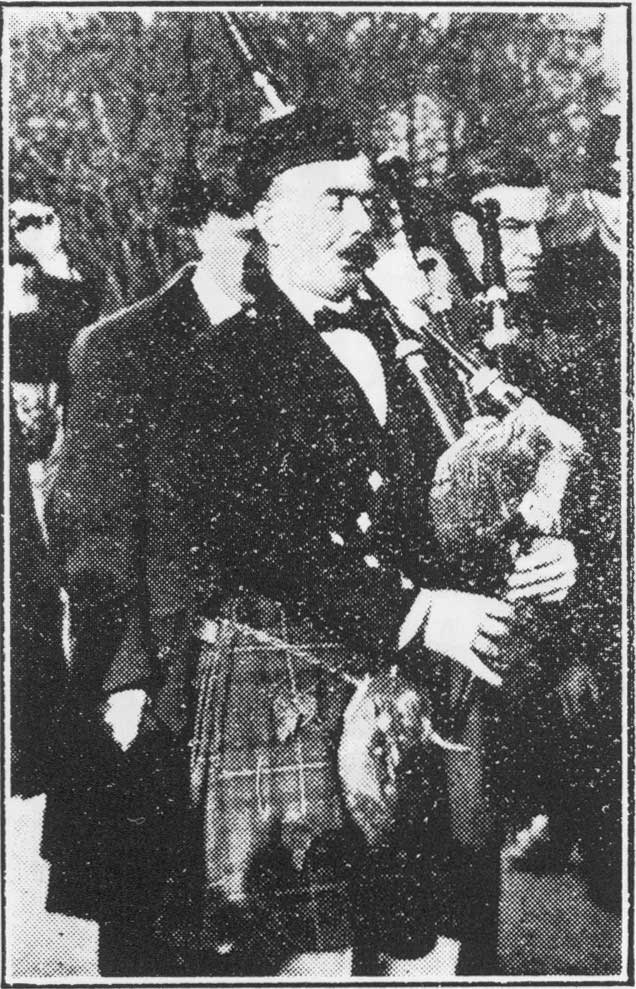
The early death of such an immense talent is one of piping’s great tragedies, not just for his musicianship, but also for the silencing of a powerful and independent voice that did not necessarily agree with the views of piobaireachd being expounded by the fledgling Piobaireachd Society.
He died of lung cancer – a common ailment among veterans in the years following the Great War. His son George reported the great man lapsed into unconsciousness in bed while giving his two boys a lesson on the practice chanter. An estimated 20,000 mourners lined the parade route to watch his cortege pass on June 4, 1929. It was led by 40 pipers. Pipe-Major Robert Reid played the lament.
The composing legacy of G. S. McLennan is one of the greatest in the art form. He was known to scribble tunes and parts of tunes in a small notebook he carried with him, or on any scrap he could find before transcribing the finished piece into a manuscript book with the date and the place of composition. His musical imagination graced almost all time signatures: the marches Inveran and The Lochaber Gathering, the reels, Mrs. MacPherson of Inveran, The Little Cascade, Willie Murray’s, Alick C. MacGregor and Dancing Feet, the retreat marches Loch Maree and The Kilworth Hills, the 6/8 march Major John McLennan,the jigs Jig of Slurs and his Biddy from Sligo arrangement, the strathspey The Strathspey King and more. His marvellous The Braemar Gathering, would languish in obscurity until his brother D. R. entered a nameless 6/8 march of his brother’s in a composing contest for that venue and won. G.S.’s son George gave the winning tune its first public airing there in 1950. In fact, many of G. S.’s compositions were left only as numbered tunes in a manuscript book. They were later published and titled by his family. The following link shows G.S.’s son George accepting the prize from the King and Queen at the Braemar Gathering in 1951.
George McLennan accepting “Braemar Gathering” prize (at 21-second mark.)
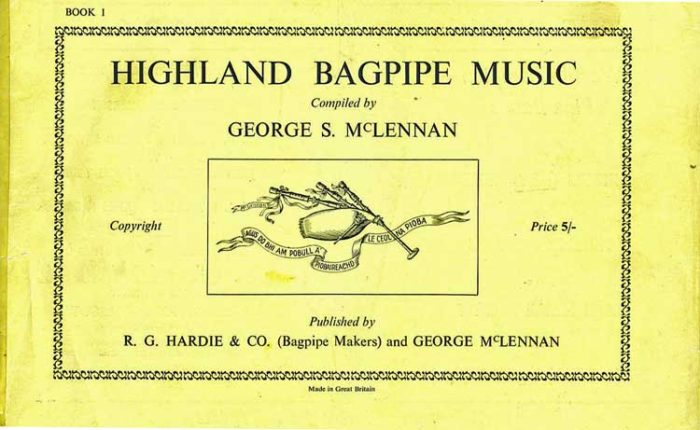
While his playing was said to be pointed and brisk, his music, as evidenced in his 1929 book Highland Bagpipe Music, was often written free of dots and cuts, giving the performer free reign to express as he or she wished. This has led many pipers mistakenly to believe that G.S. was a round player, but those who knew him and heard him play said that this was not the case. He was particularly loved jig playing, and in 1910 wrote:
I am immensely fond of jig playing and consider it one of the finest methods possible for putting one into form. In fact one cannot play jigs unless in tip-top form…. My ‘Jig of Slurs’ I am extremely proud of – not of course as a tune with a fine melody but for its grand execution. I do not know a tune – Piobaireachd or anything – which is nearly so difficult or requires such a nimble finger to play. The person who can play it through two or three times without missing a slur has certainly no cause to be ashamed of his fingers.
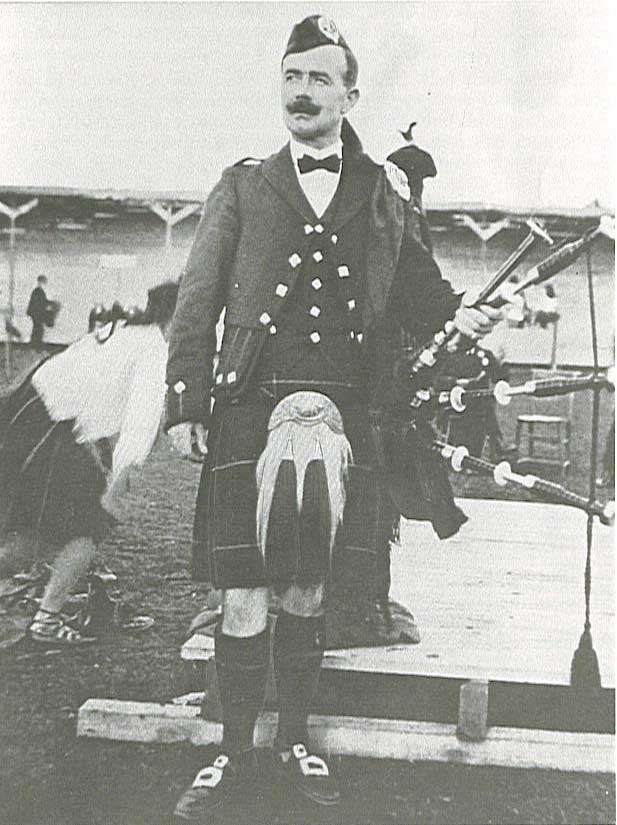
As a piobaireachd player, his style, like his father’s, diverged from common practice by being much quicker and more rhythmical than the prevailing style of the day. He was known to march in time to the tune as he played.
At the time of this writing, the silver and ivory Henderson pipes G. S. competed with were being played by his great grandson (from young George’s line). This family have in recent years mounted a traveling exhibition entitled “Tunes from a Silent Chanter” and are creating a website devoted to the great piper. An extensive manuscript of piobaireachd and light music in his hand is held in the University of Aberdeen.
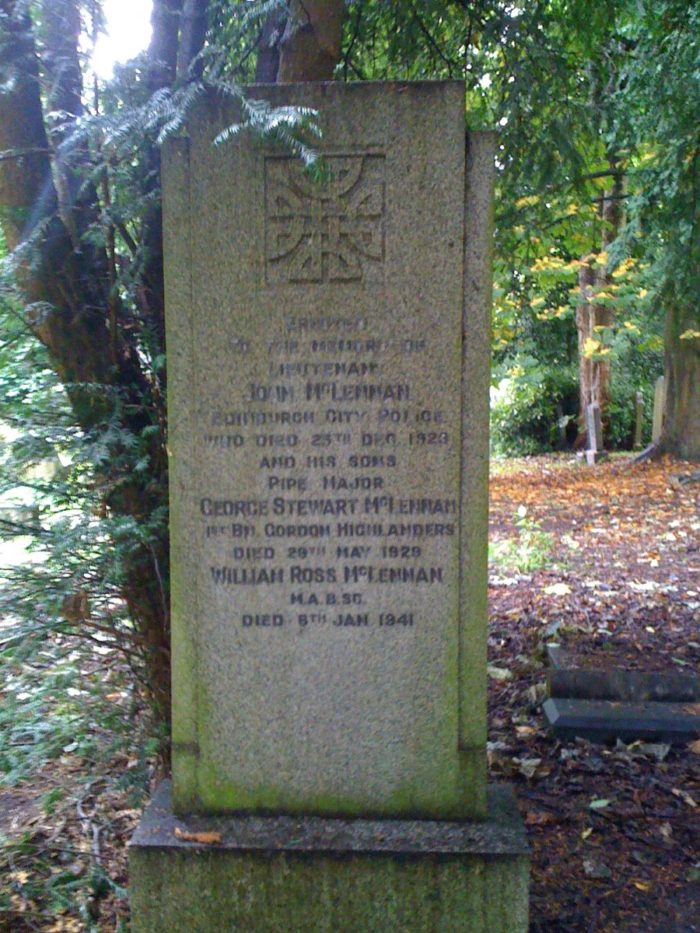
JM, October 2006
-with notes from Piping Times (March 2005, January 1974), ‘The International Piper’ (February 1980), ‘Pipers’, by Dr. William Donaldson, Birlinn Ltd., 2005, ‘The Gordon Highlanders Pipe Music Collection, Volume 2’, Halstan & Co., Ltd., 1985, and private communication with Dr. Donaldson and Hamish McLennan.
Addendum:
G. S. McLennan’s half-brother, Donald Ross MacLennan (who died in 1984 and was known to all as “D.R.”) published this remembrance of G. S.’s brief recording career in the April, 1969 issue of ‘Piping Times’:
When my late brother, G. S. McLennan, won the amateur Championship of Great Britain at Stamford Bridge (London) in 1894 at the age of 10 1/2 years, he made three phonograph records — the old cylindrical type. Two of these records are now in the Royal Scottish Museum, Chamber Street, Edinburgh. The third record was unfortunately smashed, although I heard it when it was whole.
On one of the records now in the Museum, G. S. plays “The Midlothan Pipe Band,” “Climbing Duniquaich” and “The Man from Glengarry.” All three would probably be “new tunes” at that time, and a boy like he would wish to play the latest! There were no names of tunes on the record cases although I myself subsequently put the name on them so that I do not know if the tune was named then or not — but the tune is certainly what we know as “The Man from Glengarry.”
George had always a great regard for D. C. Mather [composer of the latter two tunes above], and often told me that “David Mather never really got justice when competing at the Games in Scotland.” It may be that Mather, too, thought something of the boy G.S. McLennan and gave him copies of these two tunes long before they were published.
These recordings are the only ones G.S. ever made, and these on a “home” phonograph (not a recording company) and playing on his half-sized pipes.
It may interest pipers to know the names of the tunes on the other two reords. On the other record in the Museum he plays “Inveresk House” (by James Mauchline), “Shepherd’s Crook” (1st two parts only), and the “De’il Among the Tailors.”
On the record which was smashed he played “Lochiel’s Welcome to Glasgow,” “Maggie Cameron” and “The Eight Men of Moidard.”
Editor’s note: one of these recordings is now available on the G.S. McLennan website, though the reproduction is poor and the piping on the recording is barely audible. You can listen to it here: G.S website.

7 Comments
I have to confess Jim that I’ve never been fully convinced that the photo purported to be of Willie Gray is, in fact, the man in question. Your study of scale besides, when looking at an enlargement of the photograph, it can be seen that the mustache is more of the “handle bar” type sported by G.S. McLennan, rather than Pipe Major Gray’s “Hitler Style” growth. Also, the piper in the photo is playing a silver and ivory mounted set, whereas Willie Gray’s set of solid silver mounted MacRae pipes are well known to pipers who are interested in these things. Not to say that he didn’t play a different set at some point (indeed, most likely did) or that he owned more than one set of pipes.
The dirk worn by the piper in the photo is, I believe, a Gordon Highlanders Pipe Major’s dirk, and of course you already mentioned the kilt pin. The sporran is a puzzle: clearly not a Gordon’s sporran, it most closely matches an Argyll and Sutherland Highlanders Pipe Major’s sporran….although the tassles should be black and the body white. Of course, these things can change over time as well and sometimes differed between battalions, of which the Argylls had many in the First World War. Still…..in my punter’s opinion…..I’d say it’s G.S. in the photo, and not Willie Gray.
Cheers,
Mitch
I agree 3/4-heartedly with you. The final quarter I leave to Jeannie Campbell — whose knowledge and opinions I respect greatly. Jeannie believes it to be Willie Gray, saying that the photo was actually brought in to the College of Piping by Willie Gray’s widow, who, obviously, said it was Willie. That’s a pretty ringing endorsement. Still, I can’t get G.S. out of my head. If you haven’t seen it, check out the G.S. McLennan website, created and maintained by G.S.’s great-grandson Calum, son of G.S’s grandson Hamish, who conceived and researched the site. A superb piece of work: http://gsmclennan.co.uk/
The cemetery is now known as Newington Cemetery. I paid respects to G.S. McLennan in 2018 before the Glenfiddich competition. I was worried that the marker might’ve been pushed over like a lot of the others, but was able to find it just as it’s in the photo. Was a beautiful autumn day.
A terrifically great read….a bazillion thanks Jim McGillivray
Thank you Jim, and the commenters, for this insightful biography of a wonderful piper and human being. I have returned to piping after a short break (of 50 years). I am ashamed to think how as a young player I never stopped to think about the composers of the tunes I played. Your site is allowing me to correct that shortfall.
Finally once again my thanks for all you have done for piping over the years, from your playing, to this site and for all your educational products. You, along with a very patient tutor, have made my return to piping a joy.
Hello, i enjoyed your article about GS immensely as i continue to do research about another great piper and composer namely Pipe Major John McLellan DCM of Dunoon.
Did GS and John McLellan DCM ever meet?
All the best